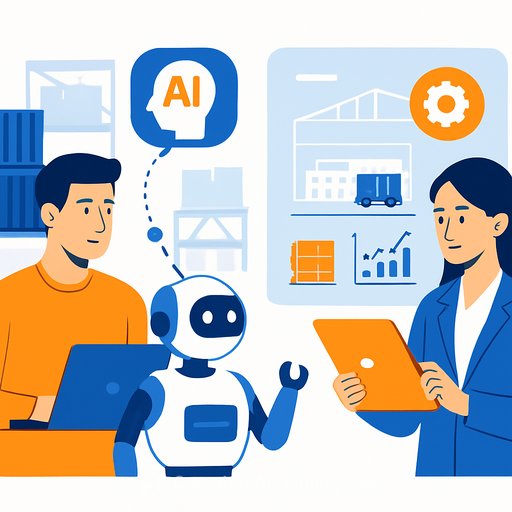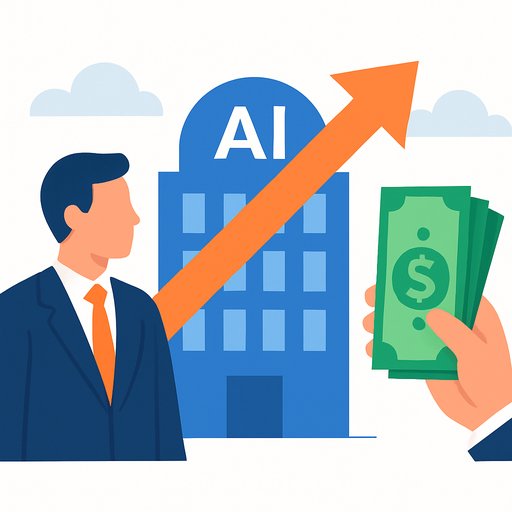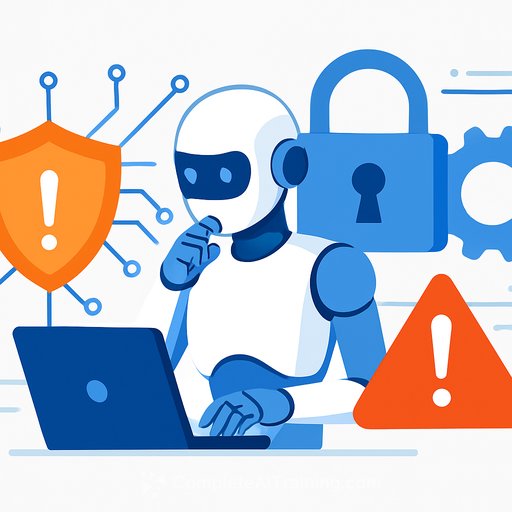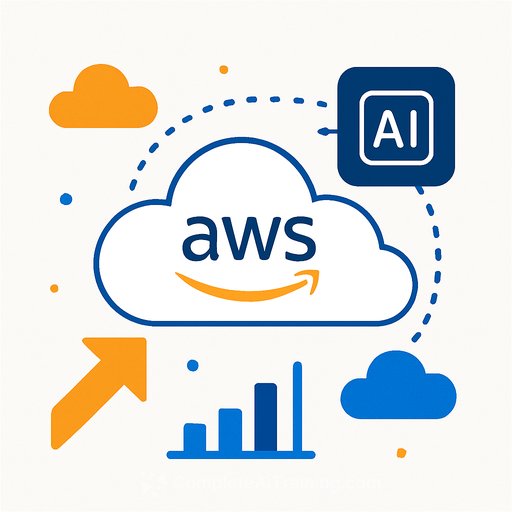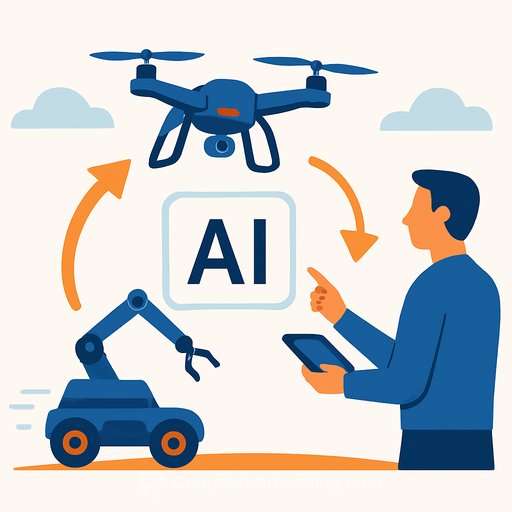November 2025 | Good Question
What New Jobs Will AI Create in Logistics and Supply Chain Management?
AI is moving from pilot to production. As routine planning and tracking shift to machines, new leadership and specialist roles are emerging to steer, question, and scale that intelligence. If you run a team or a P&L, these are the seats you'll need to fill-or upskill for-over the next 12-24 months.
Audit and Accountability
- AI risk auditor
Pressure-tests AI forecasts, sourcing choices, and risk models. Think model "red team" for logistics. KPIs: forecast error, false-positive/false-negative rates, incident counts caught pre-release. - Ethics and governance director
Sets usage policies, monitors bias and model drift, enforces data privacy, and coordinates threat monitoring. KPIs: compliance findings closed, bias metrics, privacy incidents, audit pass rate. See the NIST AI RMF for a solid baseline. - AI compliance officer
Audits AI-driven decisions end to end for transparency and regulatory fit. Safeguards against over-reliance on flawed automations and protects roles that must stay human-in-the-loop. KPIs: explainability coverage, regulatory exceptions, model approval lead time. - Accountability officer
Owns liability, policy writing, incident response, and contract language where AI is a party to performance. KPIs: incident time-to-resolution, contractual risk exposure, insurance claims avoided.
Bot Wrangler
- Robot manager
Keeps fleets of warehouse bots and drones moving-no aisle blockages, no label misreads left unresolved. KPIs: picks per hour, stoppage minutes per shift, safety events. - Physical AI fleet orchestrator
Optimizes autonomous equipment across shifts and sites. Ensures smooth human-robot handoffs. KPIs: utilization, throughput per square foot, exception rate per 1,000 tasks.
Forecast
- Predictive logistics operations manager
Runs AI that flags delays early, provides real-time visibility, and pushes status updates. Also builds the processes that keep it accurate. KPIs: on-time in-full, dwell time, alert lead time. - AI forecast coach
Manages a bench of forecasting models like a coach manages players-sets the playbook, tunes parameters, swaps tactics fast. KPIs: MAPE/WAPE, stockouts, service-level adherence.
Data
- AI quality analyst
Reviews AI output quality, tags defects, and feeds learning loops. KPIs: defect escape rate, rework cost, model improvement cycle time. - AI data curator
Maps and collects the messy operational data-inventory, labor, equipment, cycles, seasonality-and brings in external signals that lift performance. KPIs: data freshness, coverage, lineage completeness. - Supply chain prompt engineer
Codifies tribal knowledge into prompts, rules, and scenarios. Translates "ASAP means 48 hours for Customer A, two weeks for Customer B" into model-ready logic. KPIs: prompt reuse rate, decision accuracy uplift.
Strategy
- AI trade strategy analyst
Uses ML tools plus judgment to spot tariff shifts early, optimize landed cost models, and preempt compliance risks. KPIs: landed cost variance, duty spend avoided, time-to-mitigate. - Operations strategy director
Connects AI across ordering, marketing, inventory, fulfillment, and storage to company goals. KPIs: cost-to-serve, cash conversion cycle, service level at target margin. - AI labor gap strategist
Forecasts workforce shortages, deploys automation where it actually helps, and smooths staffing gaps. KPIs: overtime hours avoided, fill rate, training time-to-productivity.
Agentic AI
- AI agent manager
Manages AI agents that book loads, vet carriers, track shipments, and handle exceptions. Prompts, monitors, and tunes performance. KPIs: handled tasks per FTE, exception resolution time, accuracy. - Agentic procurement engineer
Designs multi-agent workflows for sourcing, negotiation, compliance, and spend control. KPIs: cycle time, savings realized, policy adherence. - AI enablement engineer
Puts agents into production-maps workflows, validates data readiness, and integrates systems. KPIs: deployment lead time, rollback rate, data quality thresholds hit. - Resilience architect
Partners with agentic systems to simulate shocks and rewire networks for agility. KPIs: time-to-recover, dual/multi-sourcing coverage, inventory at risk. - Digital Operator
Uses AI to speed ops and cut costs across lanes and nodes. KPIs: throughput, cost per order, SLA hits. - AI Load Matcher
Pairs shipments to ideal carriers in real time using predictive scoring. KPIs: load acceptance, empty miles, margin per load. - Predictive Maintenance Analyst
Monitors fleet and facility data to prevent breakdowns. KPIs: unplanned downtime, maintenance cost per asset, mean time between failures. - Supply chain data analyst (modernized)
The link between math and the business: sources new data, evolves constraints, and verifies models perform in the real world. KPIs: model drift caught, constraint updates shipped, decision ROI.
Digital Twin Specialists
- Supply chain digital twin architect
Builds a live model from raw material to final delivery. Tests scenarios and pushes leaders to act before issues show up on the dock. KPIs: scenario cycle time, avoided stockouts, network cost deltas achieved. - Digital twin engineer
Designs and runs virtual models across partners for risk analysis and real-time optimization. KPIs: forecast-to-plan gap, cross-partner latency, simulation accuracy.
Predict and Respond
- Predictive maintenance manager
Forecasts chassis, reefer, and yard equipment failures. Cuts reactionary repairs and keeps assets productive. KPIs: downtime, parts spend, technician utilization. - Predictive exception and remediation lead
Turns early warnings into fast, coordinated action. KPIs: time-to-resolve, revenue protected, customer comms latency.
Data Governance and Analytics
- Supply chain data steward
Drives governance across supplier networks, disruptions, and movement tracking. Proposes weekly cost saves from better data. KPIs: policy adoption, data SLAs met, cost savings realized. - Advanced data analytics specialist
Delivers near real-time insights from multi-source data-demand shifts, bottlenecks, disruptions. KPIs: decision lead time, throughput variance, alert precision.
Agentic AI: Fulfillment and Orchestration
- AI fulfillment optimization manager
Leads agents that direct robotics, labor, and order flow in real time. Expect new gigs to emerge around dark-warehouse ops and specialist roles inside facilities. KPIs: orders per labor hour, pick-path efficiency, backlog clearance time. - Supply chain agent manager
Creates agents, monitors activity, and improves performance with a clear view of operations and financial goals. KPIs: agent uptime, duplicated work avoided, dollar impact per deploy. - Agentic AI managers
Orchestrate agent fleets to prevent collisions and wasted cycles. KPIs: handoff success rate, conflicting actions prevented, SLA adherence.
Optimization and Network AI
- Logistics efficiency manager
Uses AI to spot bottlenecks and suggest route and schedule changes in real time-human makes the final call. KPIs: on-time performance, route cost per mile, fuel consumption. - Supply chain workflow architect
Designs flows where humans and AI each do what they're best at-especially for complex decisions. KPIs: decision latency, quality of outcome, rework rate. - Director of network AI
Leads AI across planning, procurement, logistics, delivery, autonomous fleets, digital twins, and digital trust. KPIs: total network cost, resilience score, emissions per order, audit outcomes.
How to staff these roles without bloating headcount
- Start with a portfolio: pick 3-5 use cases tied to OTIF, cost-to-serve, or risk. Staff one owner per use case. Borrow specialists part-time until value is proven.
- Build a thin governance layer: one ethics/governance lead, one auditor, one data steward. Keep approvals fast, documented, and repeatable.
- Upskill first, hire second: convert your best process owners into agent managers, forecast coaches, and workflow architects. Fill deep gaps (security, compliance, digital twin) with targeted hires.
- Set a clear scoreboard: each role gets 3-5 hard metrics tied to money, service, safety, or risk. Review weekly. Ship fixes, not decks.
Core skills to prioritize
- Technical: SQL, Python basics, API fluency, prompt design, model monitoring, and product thinking.
- Operational: S&OP, transportation, warehouse flows, carrier management, trade compliance.
- Risk and governance: privacy, explainability, model drift, threat awareness, incident playbooks.
- Change and communication: crisp SOPs, floor training, and stakeholder updates people actually read.
Quick wins for the next quarter
- Stand up an agentic "control tower" for exceptions with a human reviewer. Track time-to-resolve and revenue protected.
- Launch a lightweight model audit checklist based on the NIST AI RMF. Bake it into release gates.
- Pilot a digital twin for one lane or site. Use it to cut dwell or reduce safety stock by a small, provable percent.
If you need structured upskilling for these seats, explore role-based paths at Complete AI Training - Courses by Job and certification options at Popular Certifications. Build talent while you build value.
Get Daily AI News
Your membership also unlocks:
700+ AI Courses
700+ Certifications
Personalized AI Learning Plan
6500+ AI Tools (no Ads)
Daily AI News by job industry (no Ads)

